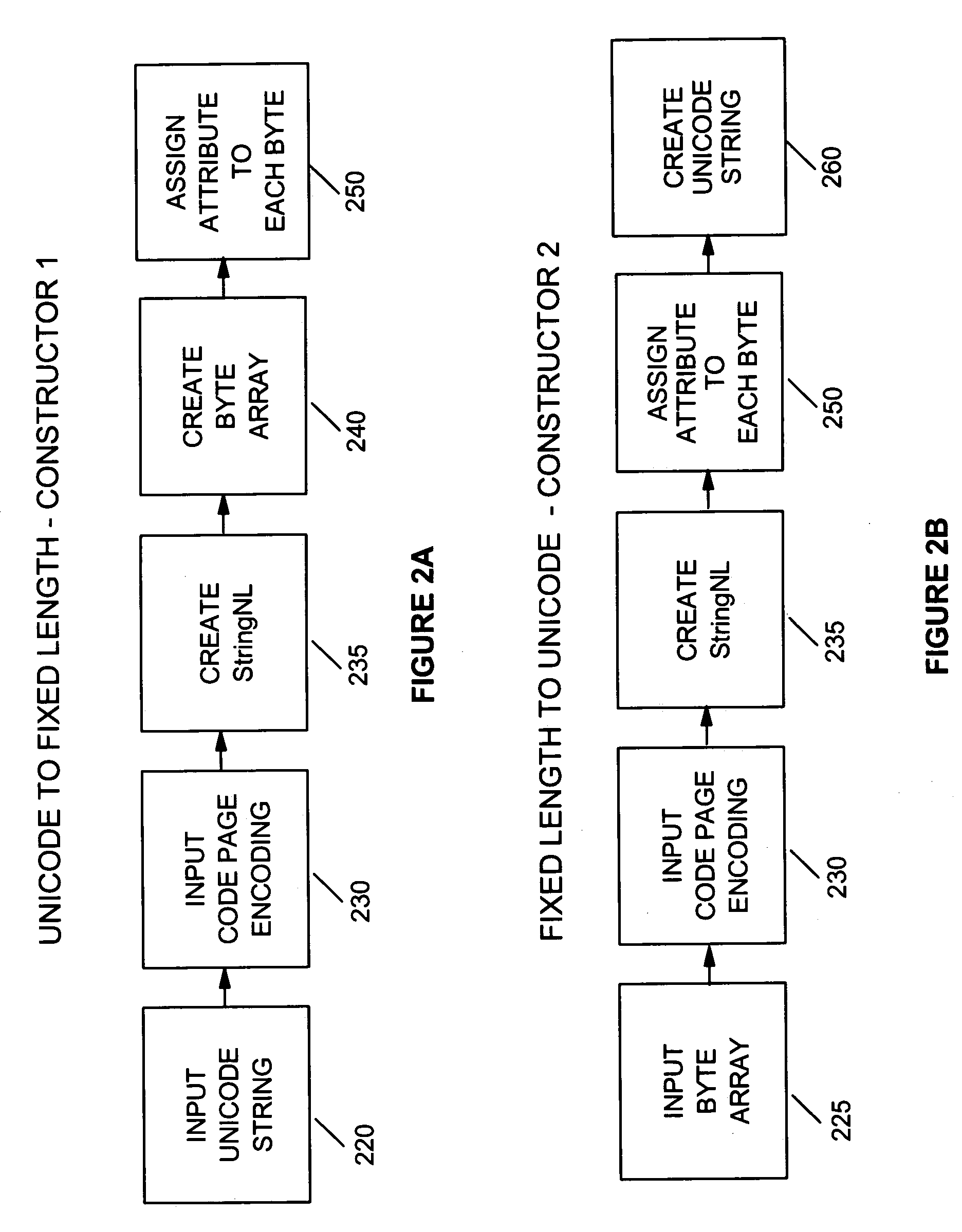Processing fixed-format data in a unicode environment
a fixed-format data and unicode technology, applied in the field of data processing, can solve the problems of data format problems, i.e., the difficulty of distributing and sharing information, and the difficulty of transforming data between computers having different formats
- Summary
- Abstract
- Description
- Claims
- Application Information
AI Technical Summary
Problems solved by technology
Method used
Image
Examples
Embodiment Construction
[0030]A suitable computer network 100 which may be used in accordance with the principles of the invention is shown in the simplified block diagram of FIG. 1. The computer network may comprise one or more computers 110, 120 or a terminal 130 networked through an intercommunication system or network 150. Typically, computers 110, 120 include at least a central processing unit (CPU) 100b, a main memory 100c, input / output (I / O) interfaces 110d, and network communication interface 110f. The CPU 110b may be programmed in any suitable manner that effects the functions described herein. Network communication interface 110f connects the computer to other computers 120 or terminals 130. Terminal 130 may have only I / O devices functionally connected to it and through the network 150 terminal 130 relies on and is in communication with a CPU 110b of another computer 110, 120. A user may interact with source code generator according to principles of the invention via a keyboard 110r, monitor 110s...
PUM
 Login to View More
Login to View More Abstract
Description
Claims
Application Information
 Login to View More
Login to View More - R&D
- Intellectual Property
- Life Sciences
- Materials
- Tech Scout
- Unparalleled Data Quality
- Higher Quality Content
- 60% Fewer Hallucinations
Browse by: Latest US Patents, China's latest patents, Technical Efficacy Thesaurus, Application Domain, Technology Topic, Popular Technical Reports.
© 2025 PatSnap. All rights reserved.Legal|Privacy policy|Modern Slavery Act Transparency Statement|Sitemap|About US| Contact US: help@patsnap.com



